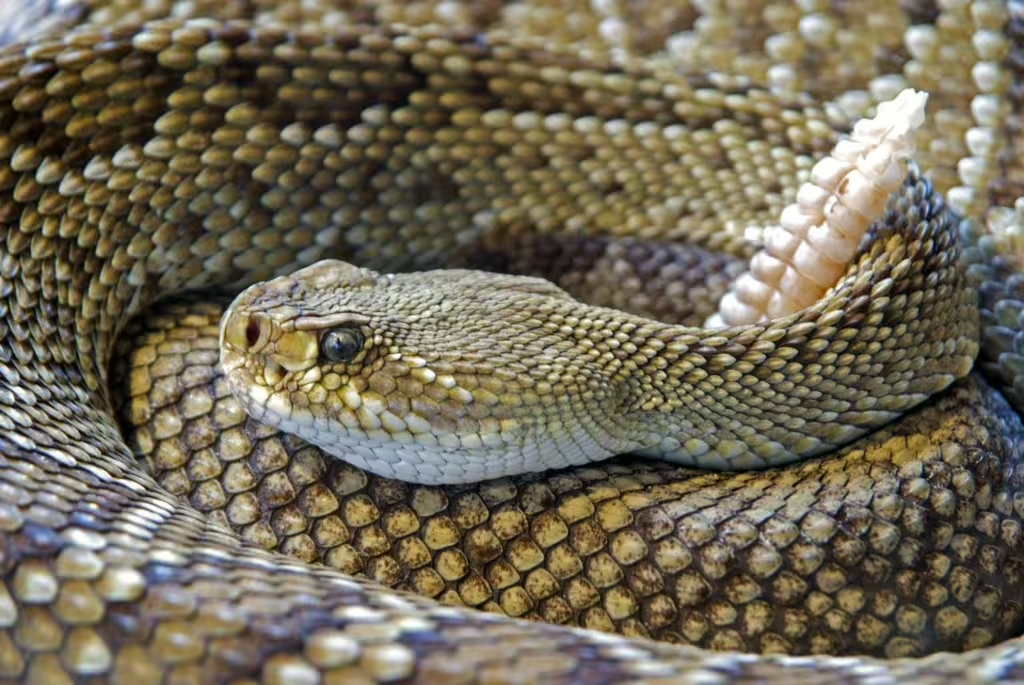Snakes; they slither through our psyche, making their languid way into our collective unconscious and implanting themselves deep within our myths, fears, and folklore. Some of humanity’s most famous stories feature snakes and many if not all of them feature them in villainous roles. It is easy to understand why. These cold-blooded creatures move and act unlike any other animals on the planet. They can squeeze the life out of their prey or inject deadly toxin into the bloodstream. Snakes, like their venom and their ability to crawl in and out of even the tiniest spaces, are the very definition of the word insidious.
Though all snakes are fascinating and terrifying in their own way, venomous snakes have a sssingular ssstyle that is all their own. This is why they have been and remain, some of the most fascinating and misunderstood creatures in the animal kingdom. Villainous as they might be portrayed however, these amazing reptiles are absolutely essential for the continued health of their respective ecosystems.
Venomous serpents play a vital role in maintaining ecological balance, while also controlling pest populations, and contributing greatly to medical advancements through their venom. As might be expected given their reputation, many venomous snake species also face significant threats, from habitat loss to human persecution. In this article, we will brave the dangerous places to explore some of the most iconic venomous snakes on the planet. We will discuss their importance in the grand plan of the Earth itself and examine why some of them are in danger of going extinct.
What Makes a Snake Venomous?
Venom, not be confused with poison, is produced in specialized glands within a snake’s biology, almost always in the head. This venom is delivered into the bloodstreams of intended targets through hollow or grooved fangs. When a snake bites, it usually does so because it feels threatened or because it is hunting. The venom is primarily used for both.
While dangerous to their prey, most venomous snakes prefer to avoid humans and will only bite in self-defense. Moreover, snakes don’t always inject venom when they bite, it is a valuable commodity for their continued survival, so if they feel they can deter a threat without it, they will; this is what is known as a dry bite. Snake venom varies in composition, containing toxins that target the nervous system (neurotoxins), blood (hemotoxins), or both. No matter which you get in your bloodstream, however, the result is usually some degree of discomfort.

Iconic Venomous Snakes
King Cobra (Ophiophagus hannah)
Location: Southeast Asia
Famous for its portrayal in timeless tales like Rikki Tikki Tavi, the king cobra is one of the world’s most iconic venomous serpents. It also happens to be the world’s longest venomous snake, reaching up to 18 feet in length when fully grown. The king cobra’s potent venom contains neurotoxins that can cause respiratory failure in its prey, primarily in other snakes, which is one of its favorite foods. This huge animal is most known for its iconic hood and intimidating posture, but like most other snakes, the king cobra tends to avoid humans whenever possible. Sadly, habitat destruction and poaching for traditional medicine and the exotic pet trade contiue to threaten this species.
Inland Taipan (Oxyuranus microlepidotus)
Location: Australia
Of all the snakes on our list, this is a “real doozy,” as Steve Irwin would say. The inland taipan has the most toxic venom of any snake on the entire planet. Often called the “fierce snake,” a single bite from an inland taipan has the potential to kill 100 adult humans. Fortunately, this snake is fairly shy and lives in the remote Australian outback, so bites are rare. Only then most brave and foolish adventurers like the Croc Hunter seek out snakes like these, which can mostly be found living in the arid regions of central Australia. As for prey, the inland taipan tends to preys on small mammals, so it doesn’t need to inject a lot of that very potent venom to make itself a meal. As with many animals, climate change and habitat degradation pose significant threats to this incredible serpent.
Black Mamba (Dendroaspis polylepis)
Location: Sub-Saharan Africa
The fabled bite of the black mamba has a mortality rate of 100%; of that sounds astonishing, that’s because it is. Perhaps the most feared snake in all of Africa, the black mamba is responsible for the deaths of approximately 20,000 people each year. This is partly because it isn’t just one of the most venomous snakes, it is also one of the fastest. It’s deadly venom is a potent neurotoxin and can cause death within hours if untreated. Despite its fearsome reputation and impressive numbers of victims, the black mamba avoids confrontation with humans. Habitat loss due to agriculture and urbanization threatens its population and puts it into further conflict with humans with each passing year.
Gaboon Viper (Bitis gabonica)
Location: Sub-Saharan Africa
The gaboon viper is a highly-recognizable pit viper, known for its striking patterns, large size, and massive fangs, which are the longest of any snake. The venom of this beautiful but deadly creature contains both hemotoxins and neurotoxins, making it highly effective at immobilizing and eventually outright killing its prey. This snake’s impressive scales also act as camouflage, allowing it to easily ambush prey. As with most snakes that live in forest regions, habitat loss from deforestation is having a significant impact on the population.
Russell’s Viper (Daboia russelii)
Location: Asia (India, Southeast Asia)
As we make our way back into Asia, we find the Russell’s viper. This snake is responsible for more snakebite deaths in its range than any other species. This might sound unusual, when compared to the black mamba, but its kill count is mainly due to the close proximity of its habitat to human settlements. The Russell’s viper has hemotoxic venom, which causes internal bleeding and organ damage in humans. Agricultural expansion and urbanization are primary threats to this species and put them in even closer proximity to human beings.
Eastern Diamondback Rattlesnake (Crotalus adamanteus)
Location: Southeastern United States
The eastern diamondback is the largest rattlesnake species in the world. This impressive serpent has a striking diamond pattern along its back, which makes it easy to spot…in the open. That pattern, however, makes it very easy for the snake to hide and camouflage itself. Its venom is hemotoxic, leading to tissue destruction and internal bleeding when bit. Habitat destruction from urban sprawl and roadkill incidents threaten its population, though not as much as some other snakes on this list.
Fer-de-Lance (Bothrops asper)

Location: Central and South America
The fer-de-lance is one of the more aggressive species of snakes on this list. It has potent venom and very defensive behavior that sees it striking with more frequency than other snakes of its type. It is highly feared in its range because of this, and there’s even more reason to fear its bite. The fer-de-lance’s hemotoxic venom causes severe tissue damage and can be fatal if wounds are left untreated. As this snake lives and thrives in tropical forests, it has become increasingly threatened by rampant deforestation and agricultural development.
Malayan Krait (Bungarus candidus)
Location: Southeast Asia
The malayan krait is a nocturnal snake that possesses a potent neurotoxic venom. This venom can cause paralysis in humans, who are ever-encroaching into its jungle habitat, causing habitat destruction and increasing snake-human conflict. Meanwhile, the krait prefers to be left alone in its wetland and forest habitats, where it preys on other snakes, amphibians, and rodents.
Why Are Venomous Snakes Endangered?
Habitat Destruction
Urbanization, agriculture, logging, and infrastructure development are the main factors threatening snake habitats all over the world. Many species, such as the king cobra and eastern diamondback rattlesnake, depend on specific ecosystems to survive and hunt. With those ecosystems rapidly disappearing, so too do the snakes, or else they make their way into human-settled areas, which only causes further problems
Human-Wildlife Conflict
Fear and misunderstanding of snakes throughout human history has always lead to widespread persecution, but these problems become much worse when dangerous snakes slither their way into human communities; not because they want to, but because their own homes are being degraded and decreased. Snakes that happen to find their way into human lands are often killed on sight, even when they pose no immediate threat. Venomous species are particularly targeted though, due to their dangerous reputation and the expense and difficulty that comes with treating snake bites.
Climate Change
Rising temperatures and changing weather patterns affect all of the planet’s plants and animals. For snakes, it is particularly precarious for prey availability. It also affects a snake’s breeding cycles and habitat conditions that venomous snakes may favor or outright need to survive.
Poaching and Illegal Trade
For as many people who want to kill venomous snakes, there are just as many who want to own them…or a piece of them. Venomous snakes are poached for their skin, venom, use in traditional medicine, and as exotic, albeit highly-dangerous pets. In fact, the illegal pet trade poses a threat to many species, particularly the king cobra and gaboon viper.
Pollution
Chemical pollutants, including pesticides and industrial waste, can contaminate water and soil, affecting snakes, their prey, local plants, and even human populations. Give a hoot folks, don’t pollute!

Where Are the Most Venomous Snakes Found?
Venomous snakes can be found on most continents besides Antarctica. This wide net of global distribution only serves to highlight their incredible adaptability. Certain regions, however, are well-known for their unique, snake-friendly ecosystems. Those places, such as Australia, serve as hotspots for these fascinating and often misunderstood reptiles.
Australia
Australia is often regarded as one of the most dangerous places on the planet when it comes to deadly or venomous animals. It is renowned for its extraordinary snake diversity, hosting some of the most venomous species of serpent found anywhere in the world. As we mentioned earlier, the inland taipan is famous for having the most toxic venom of any snake, capable of causing fatality in minutes. Other notable species include the eastern brown snake, which is responsible for the majority of snakebite fatalities in the country, and the tiger snake.
In addition to being potently toxic, Australian snakes have adapted to a wide range of environments, from the arid deserts where the inland taipan resides to the lush coastal regions and wetlands. The prevailing theory is that the unique isolation extent in Australia is what has contributed to the evolution of such highly specialized and venomous species.
Africa
Sub-Saharan Africa is another hotspot, so to speak, for venomous snakes. In this subtropical climate, species like the deadly black mamba, gaboon viper, and puff adder inspire awe and fear. Though deaths from gaboon vipers and black mambas are significant, puff adders are so widespread across the continent, that they are actually responsible for the majority of venomous snakebites in Africa. This is partly do to their proximity to human settlements. These amazing snakes are found in diverse habitats, including savannas, wetlands, and tropical forests.
Asia
Africa and Australia might have some sleek and deadly serpents, but Asia is no slouch when it comes to snakes. This continent boasts a remarkable variety of venomous snakes, reflecting the its vast and varied landscapes. The king cobra, which is the world’s longest venomous snake, roams the forests of Southeast Asia, while the Russell’s viper and Malayan krait are most often found threatening agricultural fields and grasslands.
North and South America
The Americas are also home to a vast array of venomous snakes, including rattlesnakes, coral snakes, and pit vipers like the fer-de-lance. Rattlesnakes are perhaps the most iconic North American venomous snake, with species such as the eastern diamondback and western diamondback thriving in deserts, forests, and grasslands. Meanwhile, in Central and South America, the fer-de-lance is a top predator in tropical rainforests, while coral snakes, known for their vibrant bands of red, yellow, and black, can most often be found in forests and wetlands.
In all cases and on all continents, the snakes within these environments are responsible for regulating prey populations and controlling pests near human settlements. Sadly, the same is true for the habitat destruction that every one of these snakes is currently dealing with in the modern day.
True Investigator Says…
As you can see, venomous snakes are more than just feared predators; they are vital components of the ecosystems that we share with them. Whether the dwell in desert, forest, or wetland venomous snakes are a living showcase of the power of evolution and adaptation. Fearful though we might be of their very natures, we need to understand the important part that snakes play in the world. If we fail to be cautious, not only around them, but with their continued existence, the results could be deadly.
Discover more from TrueInvestigator
Subscribe to get the latest posts sent to your email.


